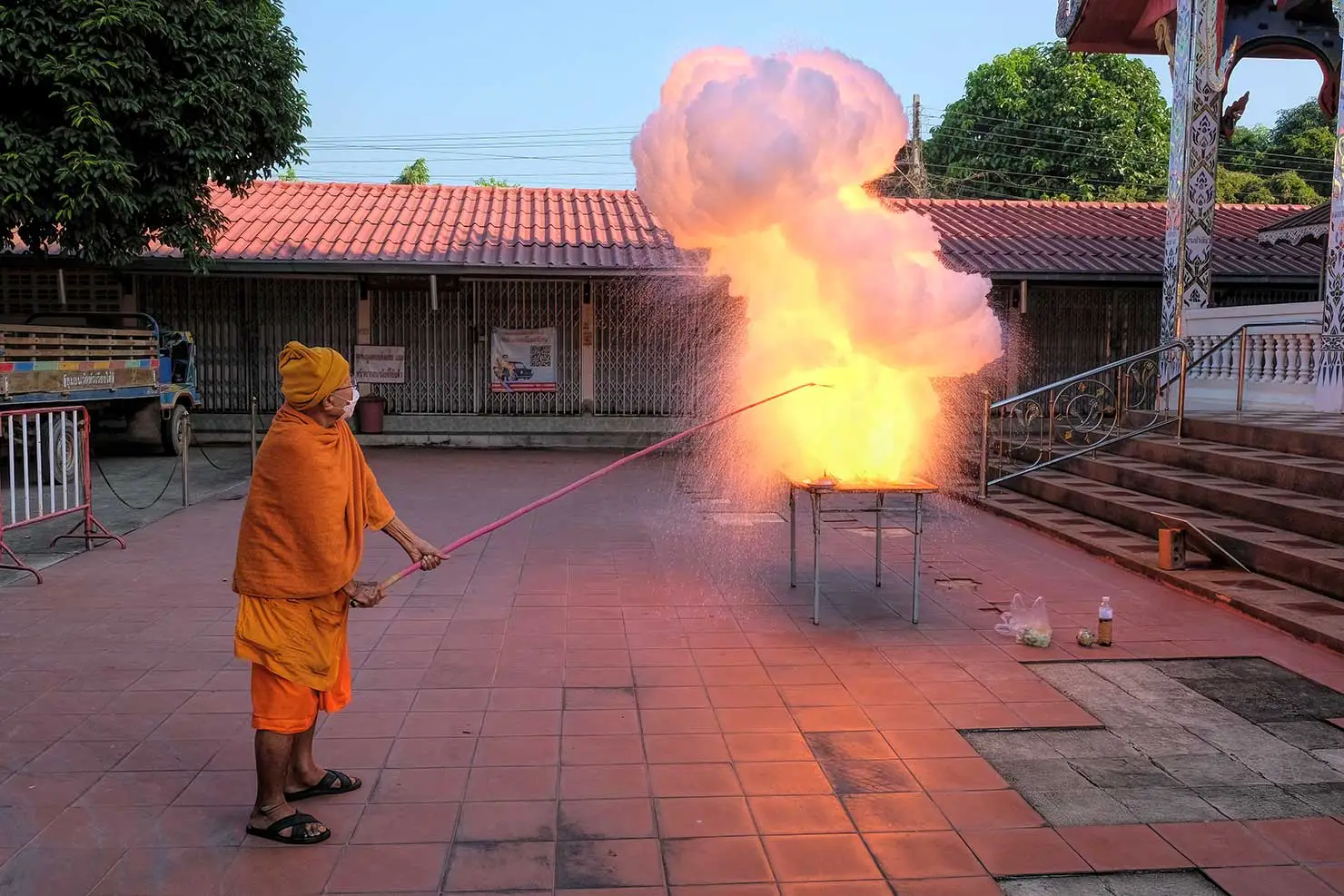March answered her phone, even though it was from an unknown caller. Maybe it would be her lucky day. Perhaps it would be someone asking to see one of the properties she’d listed in Bangkok. The woman on the other end of the line apologized. “You don’t know me, but are you the sister of Phisit Duangkaew?” Phisit, the brother she hadn’t seen for 30 years.
Tired of battling with his father, Phisit had run away from home at the age of 15. The family filed a missing person report a couple of days later. The police investigated to the best of their ability, but 30 years ago there were no computers or national databases around the world, much less in Thailand. Phisit went from missing person to presumed dead. Now March was hearing that not only was her brother alive, but he had been living with the same family for the past 30 years, in a town just outside of Bangkok.
Unfortunately, Phisit was quite ill. Hospitalized with a failing liver, he had been falling in and out of consciousness. In his delirium, his father had appeared to him. “Are you in pain?” his father asked. When he next opened his eyes, he told his adopted family that he wished to see his birth family one last time before he died. March rushed to his side the day after she received the shocking phone call. “Of course, I had my doubts. Maybe it was a scam of some kind. But when I walked into his room, he called me Ae, the nickname given to me by my family when I was a child. That’s when I knew he was truly my brother.”
March was torn about whether to tell the rest of the family. Her father had passed away some years ago, but her mother was alive. How would her mother handle learning that Phisit was alive, only to lose him all over again to a terminal illness? Phisit decided the issue for her. “Ae, after my cremation, I want my ashes to be taken back home to Nan. Will you do that for me?” The next day, March set up a video call so that Phisit could see his mother and brother. He died the following day at 4 p.m.
I heard the story from March as we drove to Nan Province several days later. She’d planned the trip some weeks earlier and had invited me and two other friends to tag along. But that day, there were actually five of us in the car. As she drove, March cradled a small urn containing the ashes of Phisit in her lap. “He slept next to me last night,” she said. She would not allow him to be alone for one moment during the journey back home. March explained that the family had arranged for a Buddhist funeral at Wat Hua Weang in Nan City the following day to honor Phisit. After prayers chanted by monks, his ashes and bone fragments would be poured onto a table, where they would be formed into the shape of a man. Following more prayers and photos of the family around the table, the cremains would be set off like fireworks, sending them high into the sky.
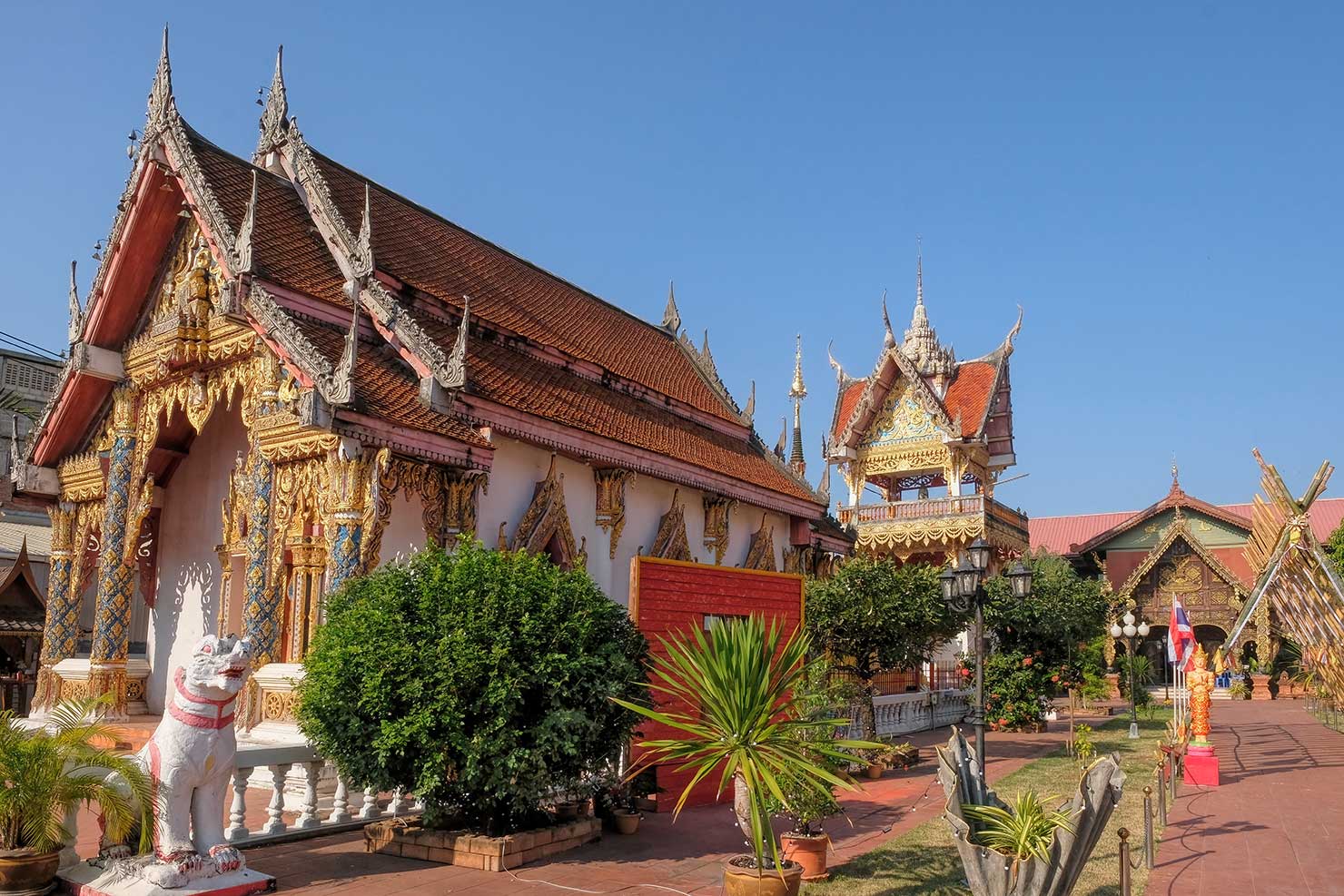
I was fascinated by the ritual she described. I had attended a funeral ceremony for relatives of my adopted family in Nepal. But I’d never heard of cremains being shot into the air. Apparently it is a tradition practiced only in the north of Thailand, in provinces that were originally part of the Lanna Kingdom. I asked if the family would allow me to attend. This is not as unusual as it sounds. Nor, as many will certainly criticize me, was it disrespectful. In Asia, the subject of death is not taboo. Perhaps due to Buddhist belief in rebirth, death ceremonies are more of a celebration of life than in western society. Birth and death are regarded as a continuation of a cycle, and happiness and sorrow are considered the same thing. Everyone is welcome at a Buddhist funeral, and taking photos is not only considered acceptable but expected.
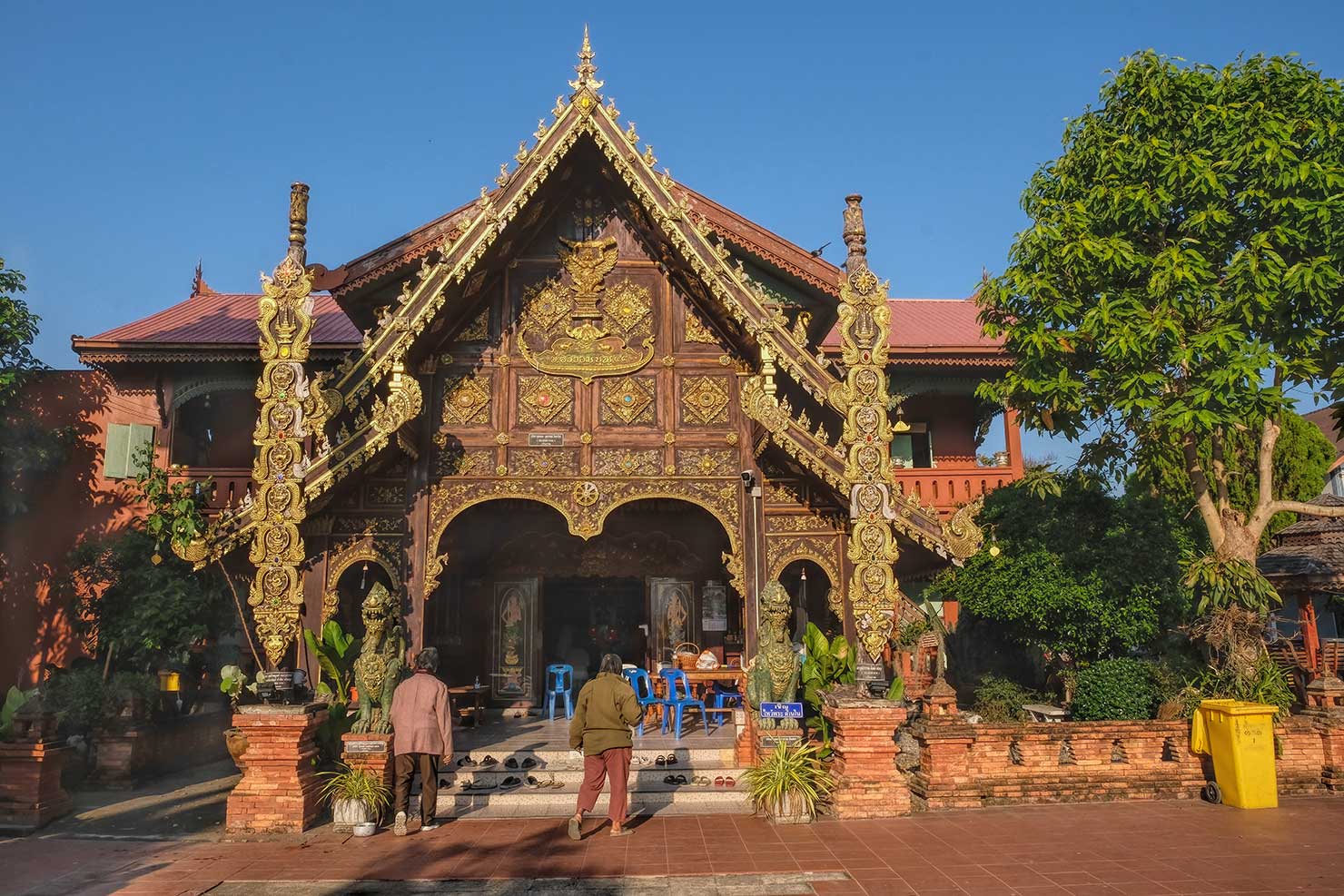
The following morning I sat with my palms pressed together in front of my chest as the monks chanted the death sutra to benefit the deceased. At the end of prayers, I waited respectfully as each attendee knelt in front of the head monk, who tied a length of red yarn around each person’s wrist as he muttered a blessing. As the last person backed out of the room, my friends and I rose to leave, but the monk called us back. We too received red yarn bracelets as a blessing.
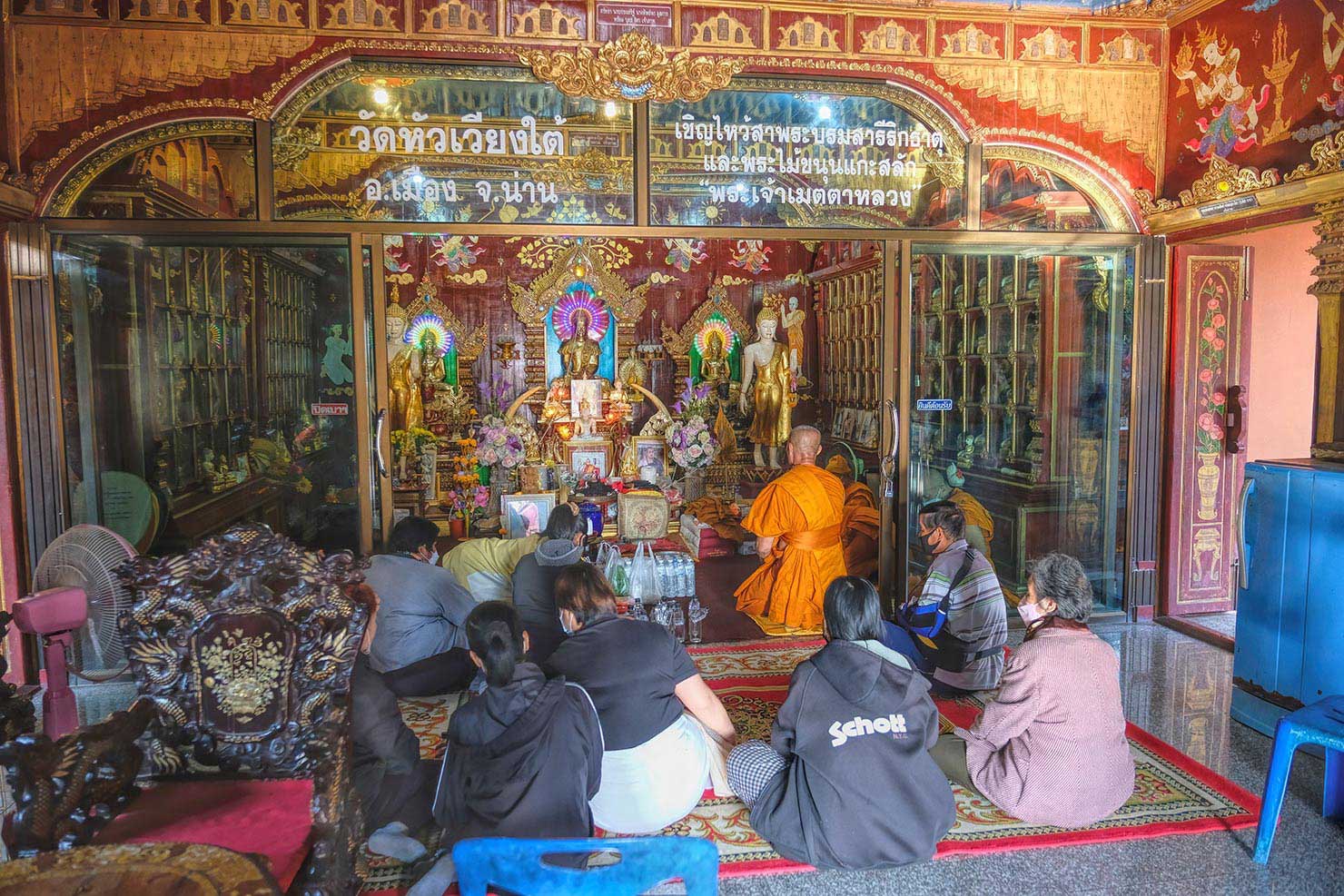
Just outside the Wat, monks had fashioned a crude figure of a human from Phisit’s ashes and bones on a newspaper-covered table. The family gathered around the table to sprinkle flower petals on the ashes and take final photographs. The ceremony complete, an older monk who had been pacing back and forth on the edges of the open space lowered a long bamboo pole down to the ashes. A smoking stick of incense tied to the top of the bamboo pole touched the human form. Crackle-bam! The pile went up in smoke, forming a mushroom-shaped cloud as it ascended to heaven.
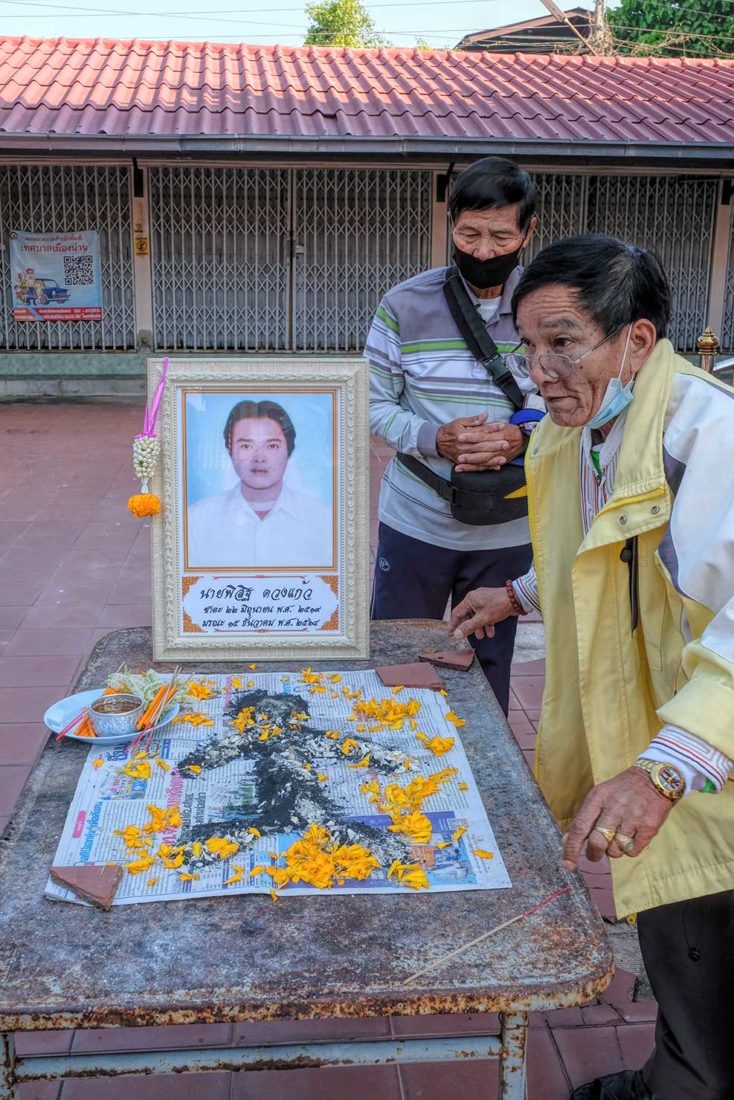
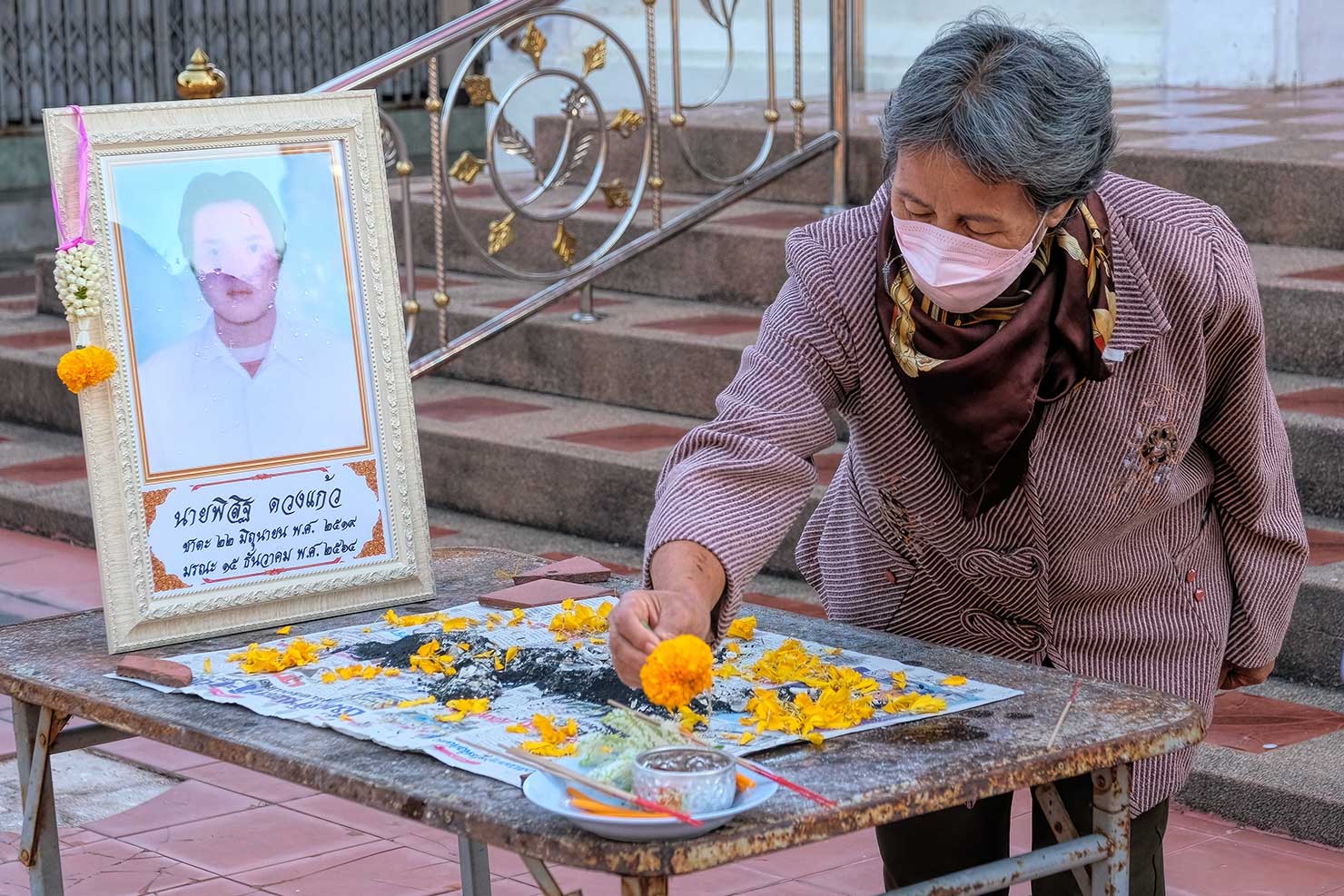
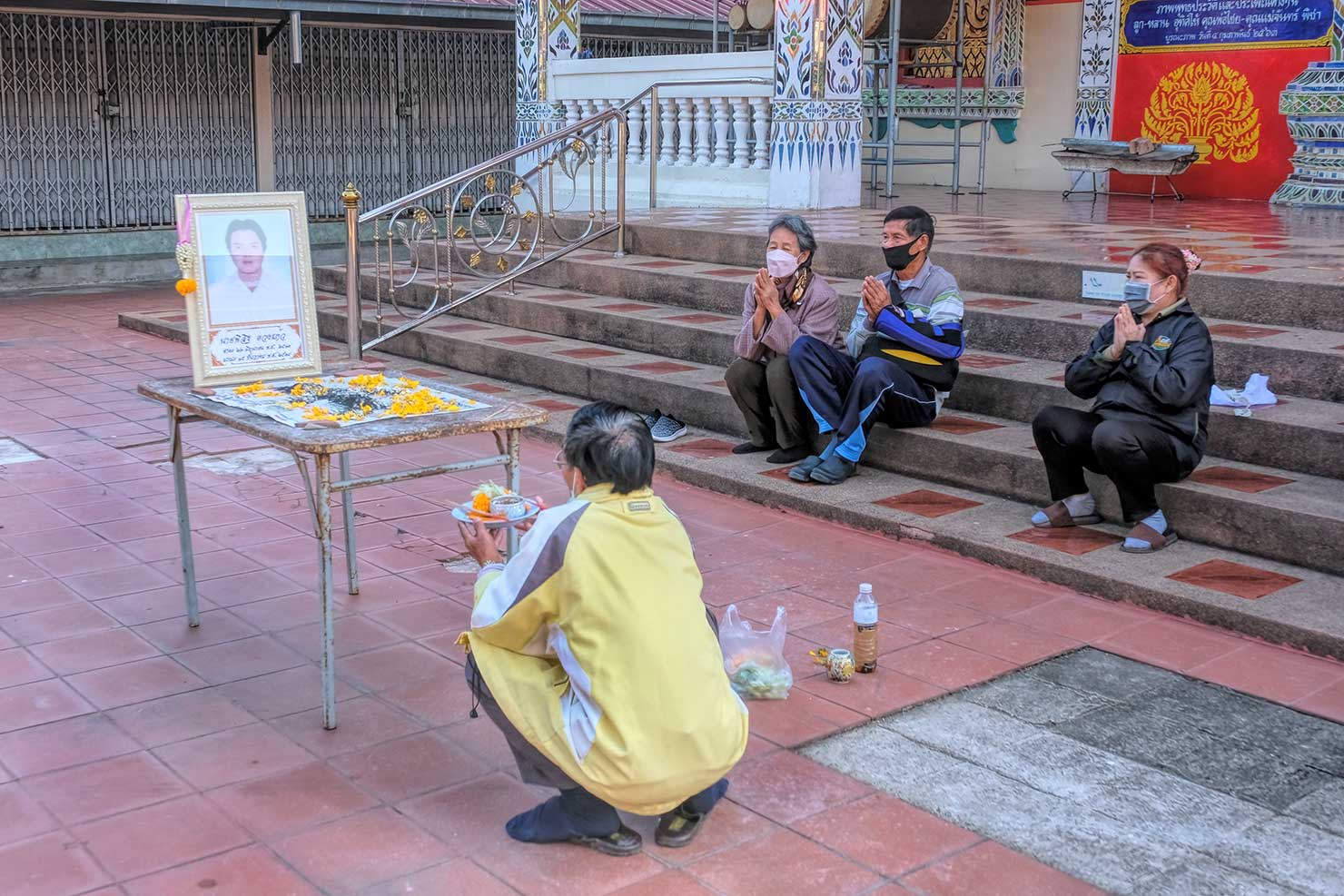
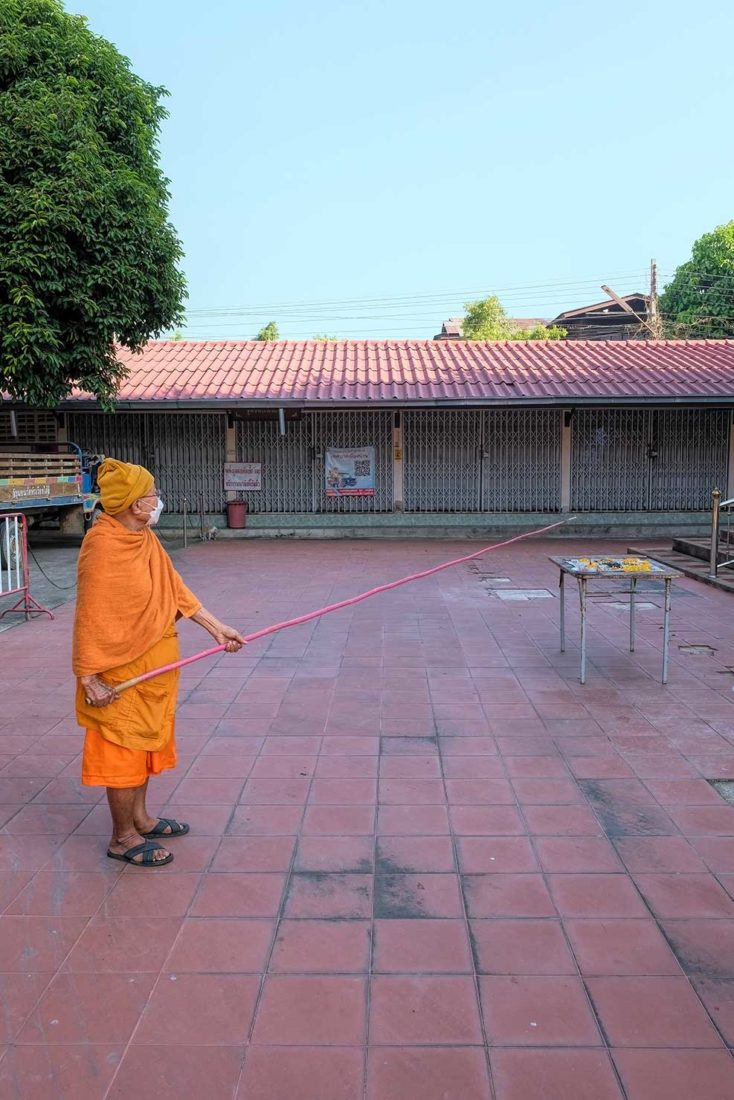
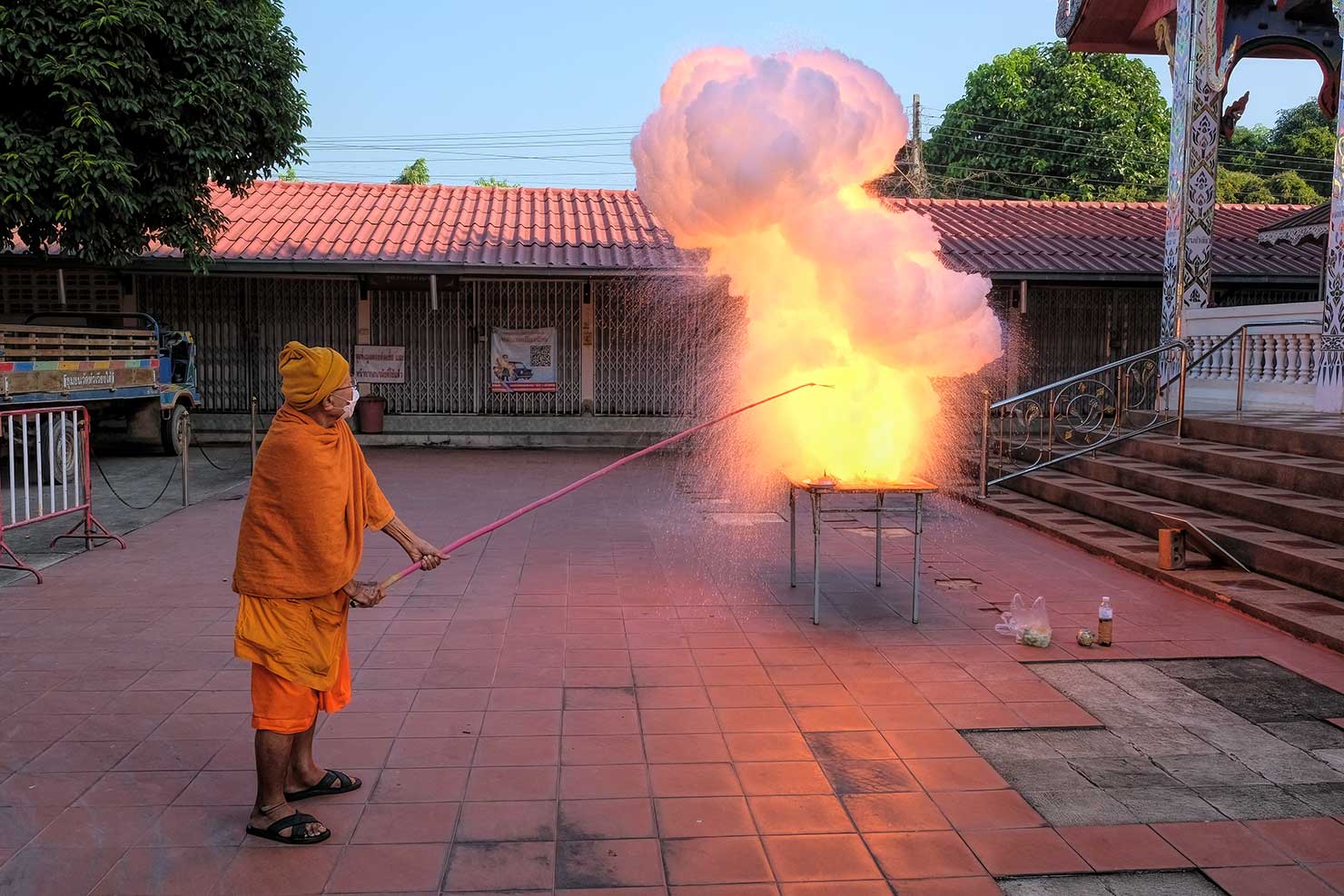
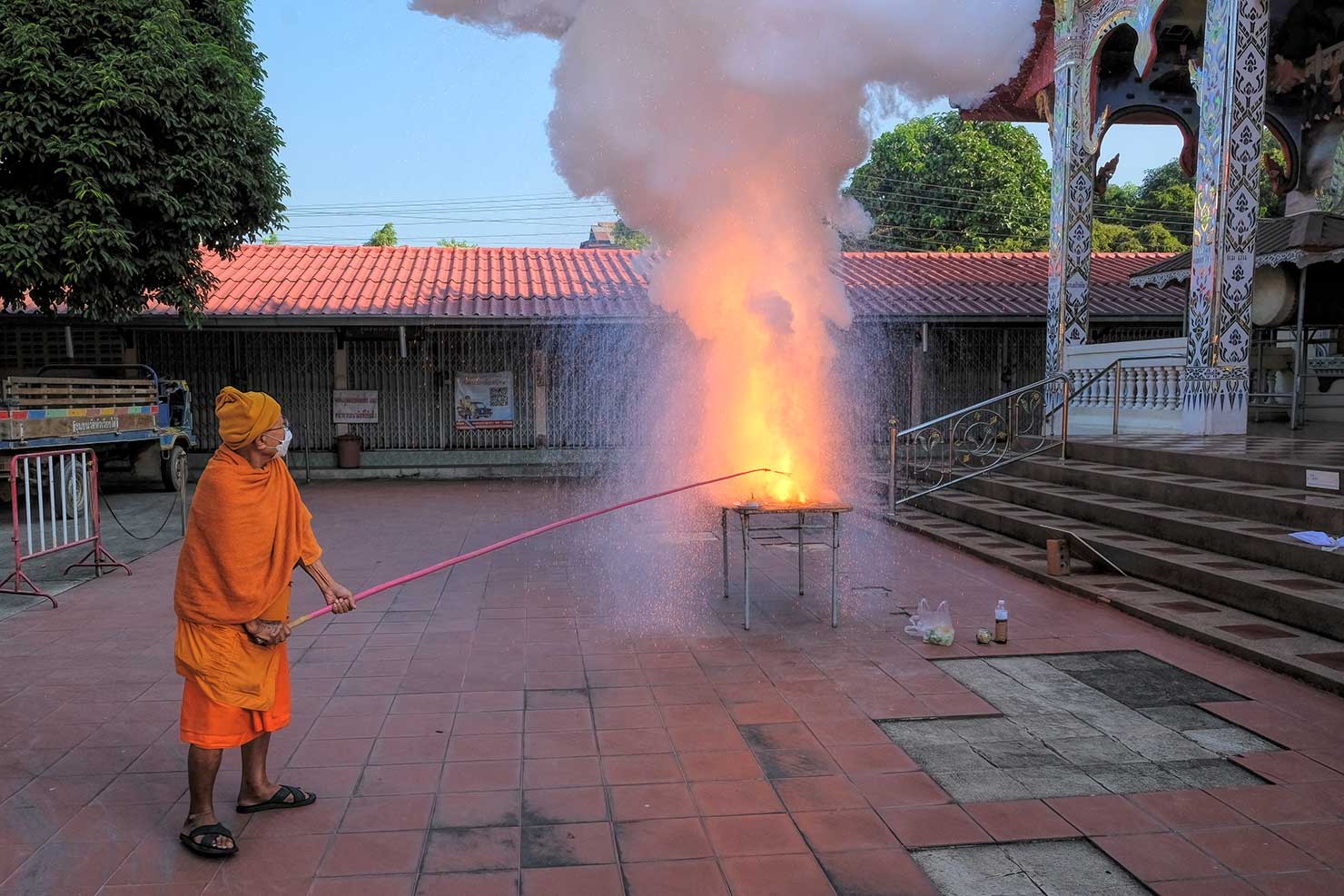
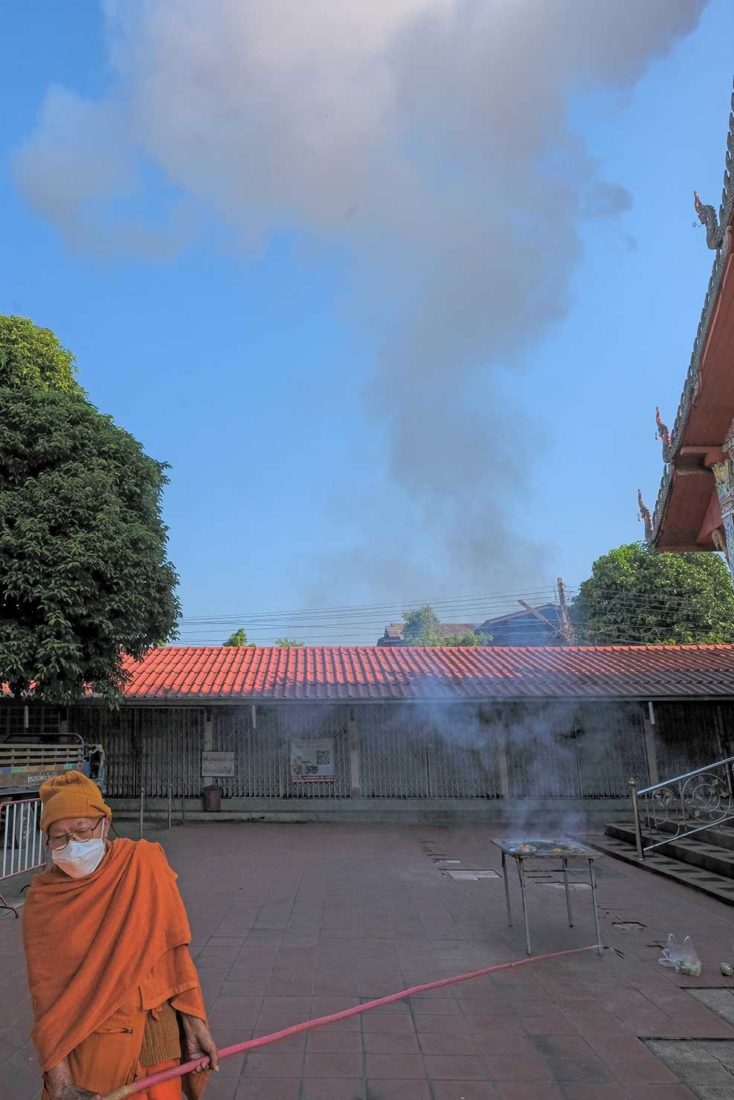

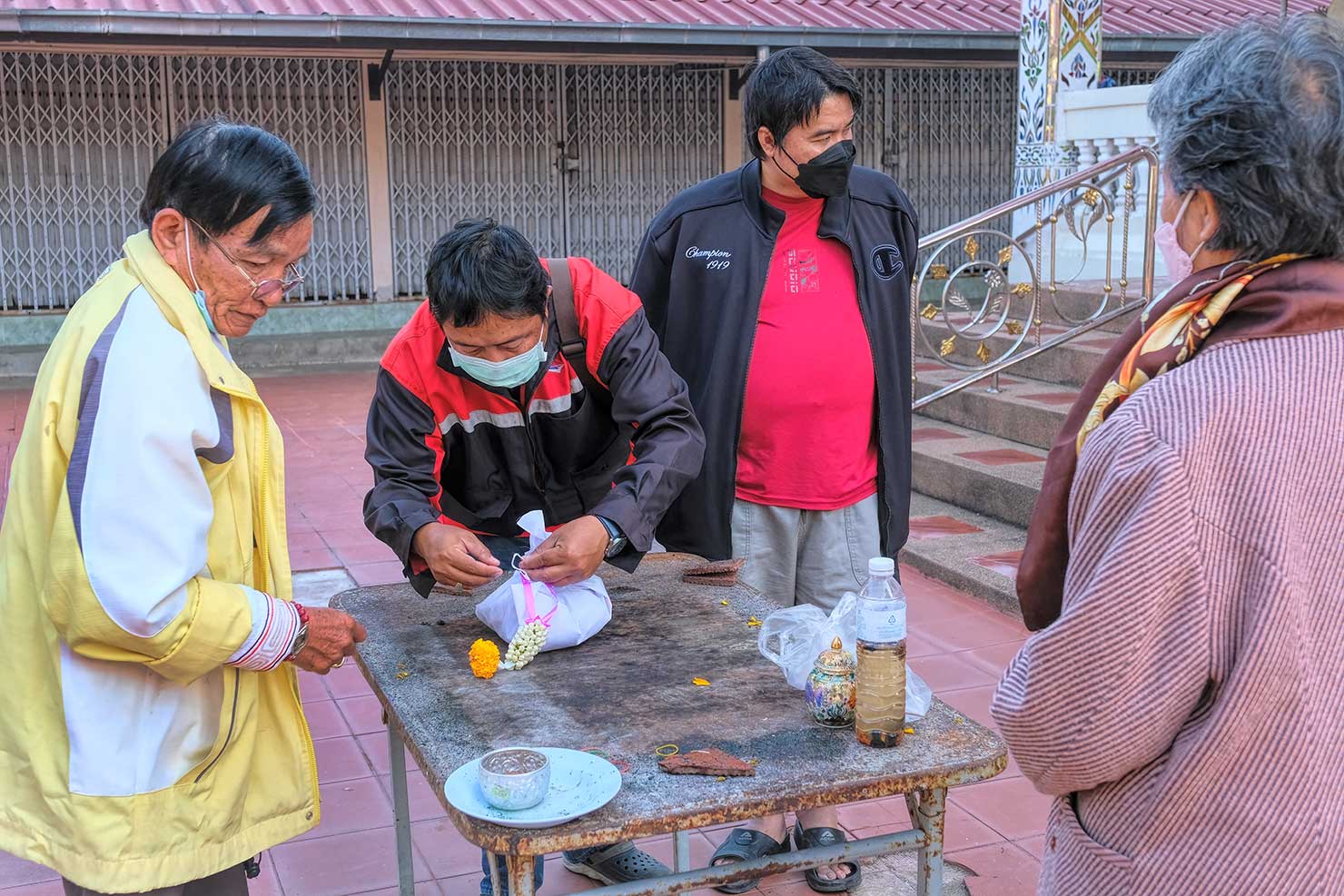
When the smoke cleared, all that remained was a gooey black residue. It was folded up in the newspaper, lovingly wrapped in a piece of white linen that was tied with string, and topped with a flower. The immediate family drove to a nearby river and set it afloat, watching respectfully as it sank beneath the surface. I was entranced. I cannot imagine a better way to end a life and I made my friends promise that this would be my fate as well. I want to go out with a bang and have my molecules carried around the globe by gentle winds for all eternity.
